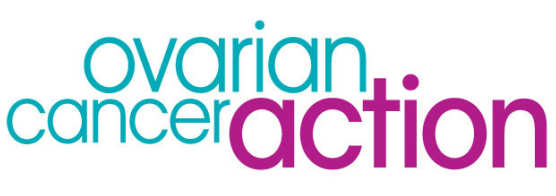BibTex format
@article{Gungor:2015:10.2967/jnumed.115.156505,
author = {Gungor, H and Saleem, A and Babar, S and Dina, R and El-Bahrawy, MA and Curry, E and Rama, N and Chen, M and Pickford, E and Agarwal, R and Blagden, S and Carme, S and Salinas, C and Madison, S and Krachey, E and Santiago-Walker, A and Smith, DA and Morris, SR and Stronach, EA and Gabra, H},
doi = {10.2967/jnumed.115.156505},
journal = {Journal of Nuclear Medicine},
pages = {1828--1835},
title = {Dose-finding quantitative F-18-FDG PET imaging study with the oral pan-AKT inhibitor GSK2141795 in patients with gynecologic malignancies},
url = {http://dx.doi.org/10.2967/jnumed.115.156505},
volume = {56},
year = {2015}
}
RIS format (EndNote, RefMan)
TY - JOUR
AB - AKT (a serine/threonine-specific protein kinase) regulates many cellular processes contributing to cytotoxic drug resistance. This study’s primary objective examined the relationship between GSK2141795, an oral, pan-AKT inhibitor, and 18F-FDG PET markers of glucose metabolism in tumor tissue to determine whether 18F-FDG PET could be used to guide personalized dosing of GSK2141795. Biomarker analysis of biopsies was also undertaken. Methods: Twelve patients were enrolled in 3 cohorts; all underwent dynamic 18F-FDG PET scans and serial pharmacokinetic sampling at baseline, week 2, and week 4 with tumor biopsies before treatment and at week 4. Response was evaluated by RECIST v1.1 and Gynecologic Cancer Intergroup criteria. Biopsy samples were analyzed for mutations and protein expression. Results: GSK2141795 did not significantly influence blood glucose levels. No dose–response relationship was observed between GSK2141795 pharmacokinetics and 18F-FDG PET pharmacodynamic measures; however, an exposure–response relationship was seen between maximum drug concentrations and maximal decrease in 18F-FDG uptake in the best-responding tumor. This relationship also held for pharmacokinetic parameters of exposure and 1,5-anhydroglucitol (a systemic measure of glucose metabolism). Phospho-AKT upregulation at week 4 in biopsies confirmed AKT inhibition by GSK2141795. Single-agent activity was observed with a clinical benefit rate of 27% (3/11) and 30% (3/10) CA125 response in the study’s platinum-resistant ovarian patients. AKT pathway activation by PIK3CA/PIK3R1 mutation did not correlate with clinical activity, whereas RAS/RAF pathway mutations did segregate with resistance to AKT inhibition. Conclusion: GSK2141795 demonstrated an exposure–response relationship with decreased 18F-FDG uptake and is active and tolerable. This study’s design integrating 18F-FDG PET, pharmacokinetics, and biomarker analyses demonstrates the potential for clinical
AU - Gungor,H
AU - Saleem,A
AU - Babar,S
AU - Dina,R
AU - El-Bahrawy,MA
AU - Curry,E
AU - Rama,N
AU - Chen,M
AU - Pickford,E
AU - Agarwal,R
AU - Blagden,S
AU - Carme,S
AU - Salinas,C
AU - Madison,S
AU - Krachey,E
AU - Santiago-Walker,A
AU - Smith,DA
AU - Morris,SR
AU - Stronach,EA
AU - Gabra,H
DO - 10.2967/jnumed.115.156505
EP - 1835
PY - 2015///
SN - 1535-5667
SP - 1828
TI - Dose-finding quantitative F-18-FDG PET imaging study with the oral pan-AKT inhibitor GSK2141795 in patients with gynecologic malignancies
T2 - Journal of Nuclear Medicine
UR - http://dx.doi.org/10.2967/jnumed.115.156505
UR - http://gateway.webofknowledge.com/gateway/Gateway.cgi?GWVersion=2&SrcApp=PARTNER_APP&SrcAuth=LinksAMR&KeyUT=WOS:000365724800006&DestLinkType=FullRecord&DestApp=ALL_WOS&UsrCustomerID=1ba7043ffcc86c417c072aa74d649202
UR - http://hdl.handle.net/10044/1/44102
VL - 56
ER -
